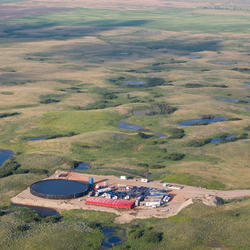Energy Integrated Science Team
The Energy Lifecycle Integrated Science team
Energy Lifecycle Integrated Science Team
The Energy Lifecycle Integrated Science Team focuses on the potential for contaminant exposures in the environment that might originate from energy resource activities including, extraction, production, transportation, storage, extraction, waste management and restoration.














